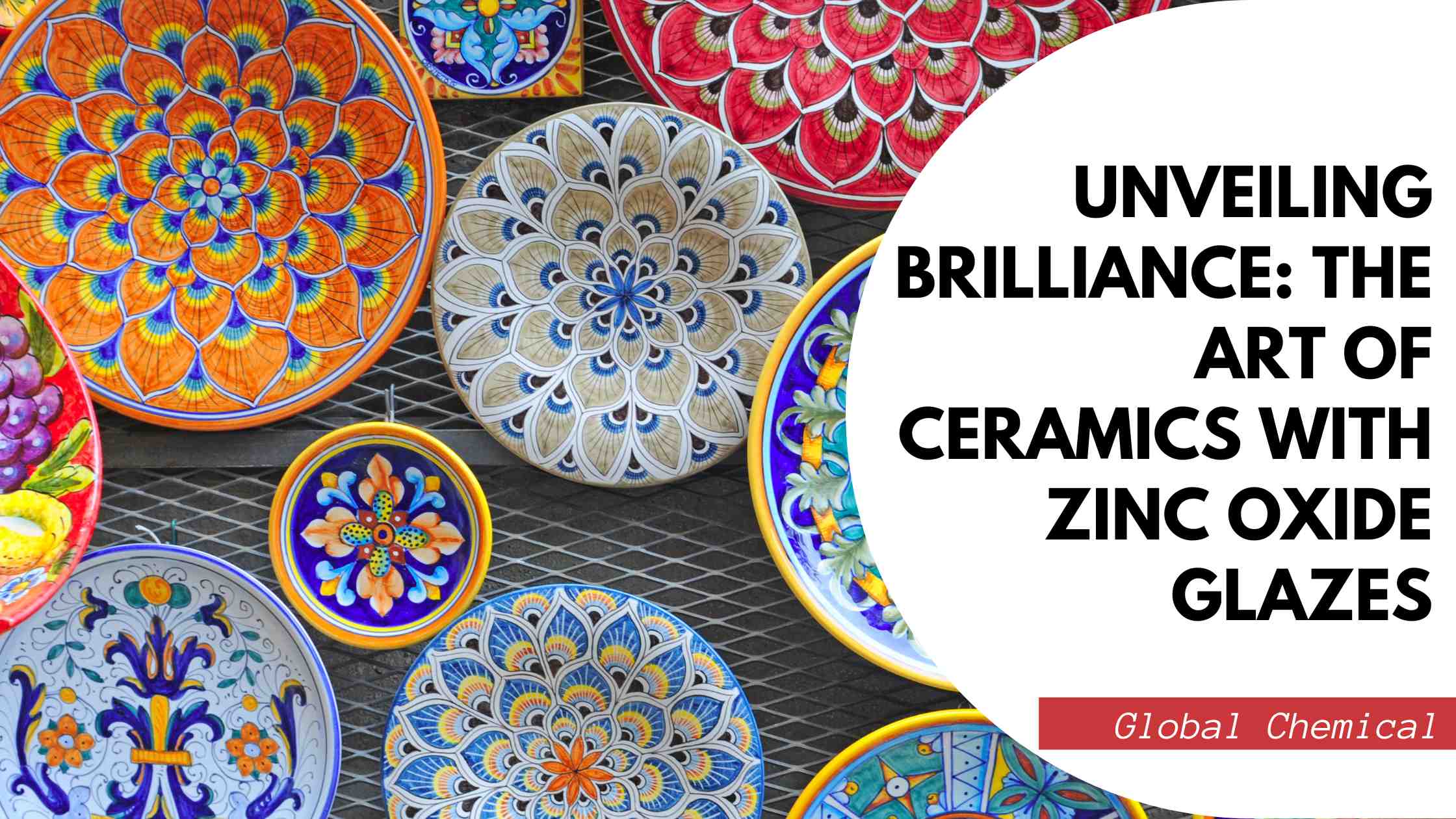
Ceramics, with their timeless beauty and enduring appeal, have captivated the human imagination for centuries. Central to the artistry of ceramics is the intricate process of glazing, where a layer of liquid glass is applied to the surface of pottery to transform it into a masterpiece. Among the array of materials used in this process, zinc oxide stands out as a key player, offering a palette of colors and enhancing surface qualities in ways that elevate ceramic art to new heights.
The Art of Glazing in Ceramics
Before we dive into the brilliance of zinc oxide glazes, let’s appreciate the significance of glazing in ceramics. The glazing process not only imparts aesthetic appeal but also adds functionality and durability to the finished piece. It’s a delicate dance of chemistry and artistry, where each element contributes to the final character of the ceramic creation.
Zinc Oxide as a Glaze Material
At the heart of many glazes lies zinc oxide, a compound known for its unique properties. Zinc oxide brings its magic to the glazing process, influencing both color and texture. As a glaze material, zinc oxide contributes to a spectrum of colors, from subtle pastels to vibrant hues, and imparts distinctive surface qualities that make each ceramic piece a work of art.
A Kaleidoscope of Colors
One of the most captivating aspects of using zinc oxide in ceramic glazes is the rich array of colors it can produce. From the classic whites and blues to unexpected pinks and purples, zinc oxide opens up a world of possibilities for ceramic artists. The ability to achieve a broad spectrum of colors allows for both traditional and contemporary expressions in ceramic art.
Improved Surface Qualities
Beyond its role in color creation, zinc oxide significantly influences the surface qualities of ceramics. Glazes enriched with zinc oxide often result in smooth textures, glossy finishes, and a depth that adds visual interest. The durability and protective features of zinc oxide contribute to the longevity of ceramic pieces, ensuring that they withstand the test of time.
Innovations and Contemporary Applications
As with any artistic medium, ceramics and glazing techniques continue to evolve. Innovations in the use of zinc oxide in ceramics push the boundaries of what is possible. Modern artists and potters experiment with new applications and methods, creating pieces that reflect the dynamic intersection of tradition and innovation.
Environmental Considerations
While we celebrate the artistic contributions of zinc oxide, it’s important to consider its environmental impact. Responsible ceramicists are exploring eco-friendly practices and alternative materials, striking a balance between artistic expression and sustainability. The quest for greener options is an ongoing conversation within the ceramics community.
Artistic Expression and Zinc Oxide
To truly appreciate the impact of zinc oxide on ceramic art, let’s hear the stories of artists who have embraced its possibilities. From traditional pottery to contemporary sculptures, zinc oxide has become a tool for self-expression, allowing artists to bring their visions to life in ways that captivate and inspire.
In conclusion, the art of ceramics is a testament to human creativity and ingenuity. Zinc oxide, with its ability to unveil brilliance in colors and enhance surface qualities, plays a crucial role in this age-old craft. As we explore the world of ceramic glazing enriched by zinc oxide, let’s celebrate the artists who continue to push the boundaries and create masterpieces that endure through time.
